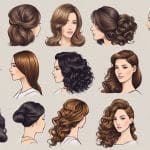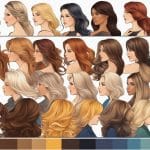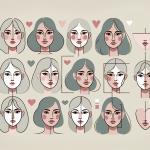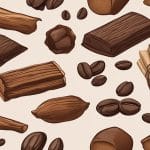Types Of Hair
Hair is an essential part of one’s appearance, and it comes in various textures and types. Understanding hair texture and types can help individuals choose the best hair care and styling products that suit their hair needs. Hair texture refers to the diameter of the individual hair strands, while hair type refers to the shape of the hair strands.
Straight hair is the most common hair type, and it is characterized by hair strands that are naturally straight from the scalp to the ends. Wavy hair has a slight curl pattern, and it can be categorized as type 2 hair. Curly hair has a more defined curl pattern, and it can be categorized as type 3 hair. Coily hair has a tight curl pattern and can be categorized as type 4 hair. Each hair type has its unique features, challenges, and benefits, and understanding them can help individuals care for their hair better.
Key Takeaways
- Hair comes in various textures and types, and understanding hair texture and type is essential for choosing the best hair care and styling products.
- Hair texture refers to the diameter of the hair strands, while hair type refers to the shape of the hair strands.
- The four main hair types are straight, wavy, curly, and coily, and each hair type has its unique features, challenges, and benefits.
Hair Texture and Types
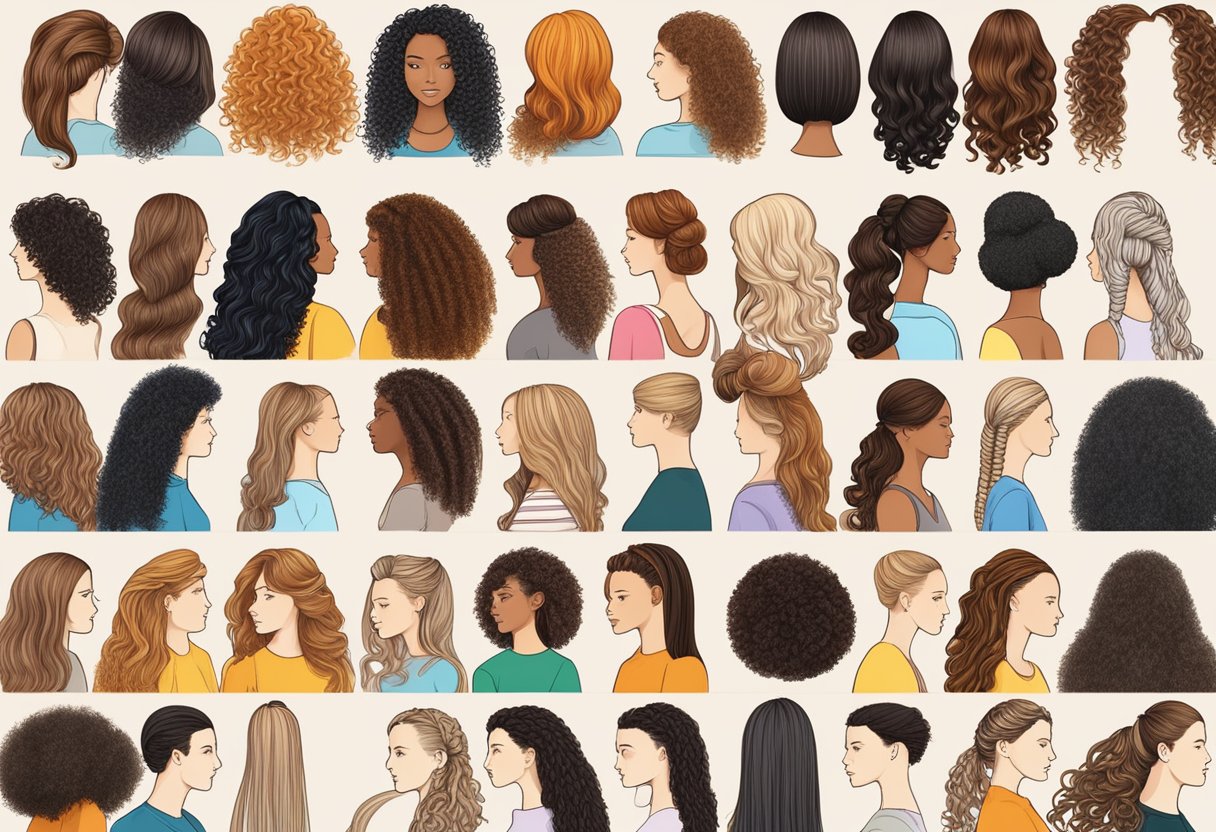
Hair texture and type are two important factors that determine how hair looks and behaves. Hair texture refers to the thickness or diameter of individual hair strands, while hair type refers to the overall curl pattern of the hair. Understanding your hair’s texture and type can help you choose the right products and styling techniques to keep your hair looking its best.
Straight Hair
Straight hair is characterized by hair strands that lie flat on the scalp and have little to no curl pattern. Straight hair is typically the thinnest of all hair types and can be easily weighed down by heavy products. To keep straight hair looking healthy and voluminous, it’s important to use lightweight products that won’t weigh down the hair.
Wavy Hair
Wavy hair is characterized by hair strands that have a gentle S-shaped curl pattern. Wavy hair can range from loose, beachy waves to more defined, spiral curls. Wavy hair is typically thicker than straight hair and can benefit from products that provide moisture and definition without weighing down the hair.
Curly Hair
Curly hair is characterized by hair strands that have a more defined curl pattern than wavy hair. Curly hair can range from loose curls to tight, springy coils. Curly hair is typically the thickest of all hair types and can benefit from products that provide moisture, definition, and hold.
Coily Hair
Coily hair is characterized by hair strands that have a tight curl pattern and can range from small, springy coils to larger, more defined curls. Coily hair is typically the most fragile of all hair types and can benefit from products that provide moisture, definition, and protection against breakage.
In summary, understanding your hair’s texture and type is essential for keeping your hair healthy and looking its best. Whether you have straight, wavy, curly, or coily hair, there are products and styling techniques that can help you achieve the look you want. By using the right products and techniques for your hair type, you can keep your hair looking healthy, voluminous, and beautiful.
Hair Care and Styling
Maintaining the health and appearance of your hair requires proper care and styling techniques. This section will cover some tips and tricks for washing, conditioning, and styling your hair.
Washing and Conditioning
The first step in caring for your hair is to wash it regularly with a gentle shampoo that is suitable for your hair type. For oily hair, a clarifying shampoo can be used to remove excess oil and buildup. For dry hair, a moisturizing shampoo is recommended to add hydration.
After shampooing, it is important to condition your hair to restore moisture and prevent breakage. A leave-in conditioner can be used for added hydration and to detangle hair. It is also recommended to use a deep conditioning treatment once a week to nourish and strengthen your hair.
Styling Products and Techniques
When it comes to styling your hair, it is important to use products that are suitable for your hair type. Mousse and styling gels can be used to add volume and hold to fine hair, while heavier creams and oils are recommended for thicker hair.
Using a diffuser attachment on your hair dryer can help to enhance natural curls and waves, while minimizing frizz. Dry shampoo can be used to refresh hair between washes and add texture.
Protective Styles and Heat Management
To prevent damage from heat styling tools, it is recommended to use a heat protectant spray or serum before using a flat iron or curling iron. It is also important to avoid using these tools on wet hair, as this can cause damage.
Protective styles, such as braids and twists, can be used to minimize heat styling and promote hair growth. It is important to avoid tight hairstyles that can cause tension and breakage.
By following these tips and techniques, you can maintain healthy, beautiful hair that looks and feels great.
Understanding Hair Structure
Hair structure is an important aspect to consider when it comes to hair care. It is composed of three primary layers: the cuticle, cortex, and medulla. The cuticle layer is the outermost layer of the hair shaft and is responsible for protecting the hair from damage. The cortex is the middle layer and contains the pigment that gives hair its color, while the medulla is the innermost layer.
Cuticle Layer and Porosity
The cuticle layer of the hair shaft is composed of overlapping, scale-like cells that protect the hair from damage. The cuticle layer also plays a crucial role in determining the hair’s porosity. Porosity refers to the hair’s ability to absorb and retain moisture. Hair with high porosity has a cuticle layer that is lifted, allowing moisture to enter and exit the hair shaft easily. Hair with low porosity, on the other hand, has a cuticle layer that is tightly packed, making it difficult for moisture to penetrate the hair shaft.
Density and Thickness
Hair density and thickness are two additional factors that play a role in hair structure. Hair density refers to the number of hair strands per square inch of scalp. People with thick hair have a high hair density, while people with thin hair have a low hair density. Hair thickness, on the other hand, refers to the diameter of each individual hair strand. Hair can be fine, medium, or coarse, with fine hair having the smallest diameter and coarse hair having the largest.
Understanding hair structure is important for proper hair care and maintenance. By understanding the cuticle layer and porosity, as well as hair density and thickness, individuals can make informed decisions about the products and treatments they use on their hair.
Challenges and Solutions
Managing Frizz and Breakage
Frizz and breakage are common hair problems that can be caused by a number of factors, including humidity, heat styling, and chemical treatments. To manage frizz and breakage, it is important to keep the hair moisturized and well-conditioned. Using a hair mask once a week can help to deeply moisturize the hair and prevent breakage. There are many different types of hair masks available, from those that are designed to repair damaged hair to those that are formulated for oily hair.
Another effective way to manage frizz and breakage is to limit the use of heat styling tools. Heat can damage the hair and cause it to become brittle, which can lead to breakage. If heat styling is necessary, it is important to use a heat protectant product to minimize damage. Additionally, using a wide-tooth comb or a detangling brush can help to prevent breakage by gently removing tangles and knots.
Dealing with Oily or Dry Scalp
Oily or dry scalp can be caused by a variety of factors, including genetics and environmental factors. To deal with an oily scalp, it is important to use a shampoo that is formulated for oily hair. Additionally, using a clarifying shampoo once a week can help to remove excess oil and buildup from the scalp.
For a dry scalp, it is important to use a moisturizing shampoo and conditioner. Additionally, using a hair mask once a week can help to deeply moisturize the scalp and prevent dryness. It is also important to avoid using hot water when washing the hair, as this can strip the scalp of its natural oils and lead to dryness.
Overall, managing hair problems can be challenging, but there are many solutions available. By using the right products and taking good care of the hair, it is possible to keep it healthy and looking great.
Hair Classification Systems
Hair classification systems are used to categorize hair types based on their texture and curl pattern. The most popular hair classification system was created by Oprah Winfrey’s stylist, Andre Walker. The Andre Walker Hair Typing System is widely used and recognized in the hair care industry.
The Andre Walker Hair Typing System classifies hair into four main categories: Type 1, Type 2, Type 3, and Type 4. Each category is further divided into subcategories A, B, and C. Type 1 hair is straight, Type 2 hair is wavy, Type 3 hair is curly, and Type 4 hair is coily or kinky.
Another hair typing system that is gaining popularity is the LOIS system. The LOIS system categorizes hair based on the hair’s curl pattern, strand thickness, and density. The LOIS system stands for L (for the curl pattern), O (for the strand thickness), I (for the hair’s density), and S (for the hair’s shape).
The FIA’s Hair Typing System is another hair classification system. This system categorizes hair based on its texture, density, and strand thickness. The FIA’s Hair Typing System is divided into four categories: Fine, Medium, Coarse, and Very Coarse.
It is important to note that hair classification systems are not perfect and do not take into account individual hair characteristics such as porosity, elasticity, and thickness. Therefore, it is essential to understand your hair’s unique characteristics and needs to properly care for it.
In conclusion, hair classification systems are useful tools for categorizing hair types based on texture and curl pattern. The Andre Walker Hair Typing System, LOIS system, and FIA’s Hair Typing System are some of the most popular hair classification systems used today. However, it is important to remember that these systems are not perfect and should be used as a guide rather than a strict rule.

